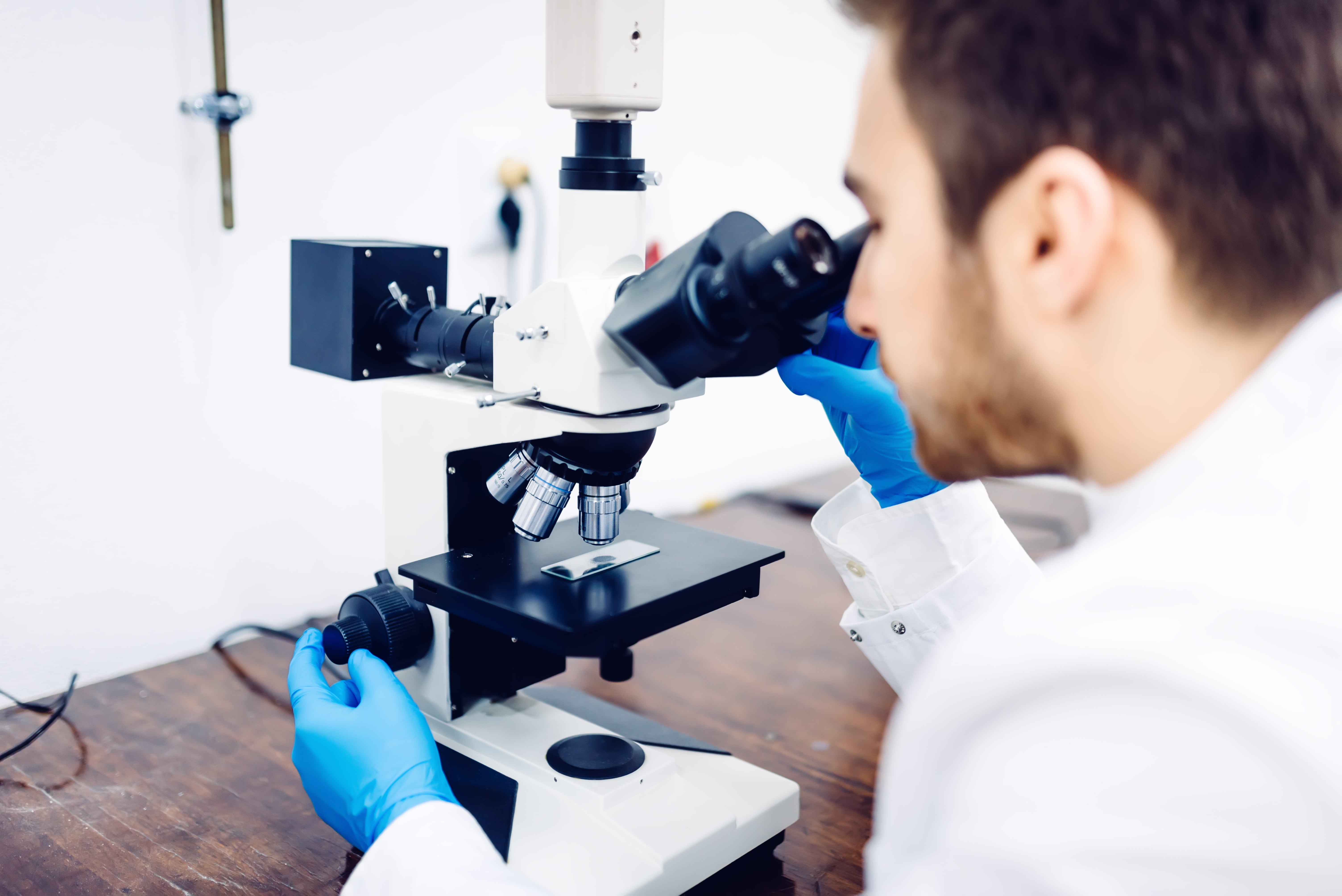For intended parents who have turned to in vitro fertilization (IVF) to become pregnant and carry their child, the embryo transfer is the long-awaited final step of this journey.
As an intended parent, you can screen your viable embryos before the embryo transfer procedure through a technique known as preimplantation genetic screening (PGS), also called preimplantation genetic testing for aneuploidies (PGT-A)
PGS/PGT-A is a rapidly evolving assisted reproductive technology, and the procedure is more beneficial for some patients than others. When pursuing IVF, talk to your fertility doctor about what’s best for your unique situation. For now, let’s cover the pros and cons of preimplantation genetic screening (PGS/PGT-A).
What is PGS/PGT-A?
PGS/PGT-A is the process of identifying each selected embryo’s number of chromosomes present. Abnormal chromosome numbers, also known as aneuploidy, are a significant source of challenge in pregnancy and birth. A normal embryo has 46 chromosomes; any more or less than 46 chromosomes can significantly impact your chances of conceiving, and can come with consequences if the embryo is carried to term.
Here's a timeline of the PGS/PGT-A process during IVF:

Source: Sunshine egg donor agency
By performing PGS/PGT-A, your fertility doctor can ensure that the embryos selected for the transfer have a healthy number of chromosomes to prevent abnormalities that will impact the pregnancy. When an embryo has an abnormal number of chromosomes, it can prevent implantation, cause pregnancy loss, or create significant health problems in your baby, which can be very difficult on intended parents undergoing IVF.
Pros and cons of preimplantation genetic screening

The benefits of PGS/PGT-A
1. Improved embryo selection
The goal of PGS is to increase the likelihood that your selected embryo(s) will lead to a successful, healthy conception for your future family. PGS testing reduces the risk of miscarriage, decreases the time it takes to become pregnant, and lowers the need for transferring multiple embryos. While there is often additional cost to perform PGS, it can often decrease the price of your IVF journey in the long run by decreasing the number of transfers necessary to conceive.
2. Gender selection (if desired)
Also known as Family Balancing or Family Planning, you can use PGS/PGT-A to see each embryo’s sex chromosomes and transfer the embryo(s) of their desired gender.
Reasons for gender selection may include:
- You’re more equipped to raise one gender over another
- You have one or more children of the opposite sex, and would like to have a balanced family
- You experienced a devastating loss of a child and hope to raise another of the same gender
- You and your partner would like to mitigate the risk of passing down genetic diseases found in one gender more than another
Each intended parent faces different circumstances, and selecting your child’s gender is a deeply personal reason. Your fertility clinic will cover this in more depth regarding your unique scenario and should always respect your decision.
3. Prevent genetic transmission of unknown abnormalities
PGS/PGT-A doesn’t test for specific diseases but instead looks for chromosomal abnormalities, such as the number and position. By performing PGS/PGT-A on your viable embryos, your fertility doctor can select chromosomally normal embryos and rule out those that would prevent a healthy birth, even if they appear high-quality before screenings.
However, if one or both intended parents have a known genetic disorder such as cystic fibrosis, preimplantation genetic diagnosis (PGD) is a better option for you.
4. Optimized chance of a successful pregnancy
PGS gives your fertility doctors insight into which embryos will be most likely to implant and develop healthily. If your embryos display specific abnormalities that prevent the transferred embryo from implanting within the uterus or developing during its early stages, your doctor can identify and abstain from transferring these embryos to optimize your IVF process.
Still, some chromosomal abnormalities are less harmful to the embryo and allow it to implant. These can still prevent pregnancy from developing correctly and can lead to pregnancy loss or a child’s birth after the embryo transfer.
5. Quicker time to pregnancy
Using PGS/PGT-A, your fertility clinic can avoid unsuccessful embryo transfers by transferring the healthiest embryos first. By understanding which embryos will help you achieve a full-term pregnancy, you can ensure you’re not spending months transferring embryos that won’t lead to a successful pregnancy and birth.
6. Reduced monetary burden
PGS testing is sometimes an additional expense, depending on your provider and payment options. Still, the procedure gives you insight into which embryos are worth transferring and freezing. Even with the additional cost of PGS/PGT-A, there’s a long-term payoff from understanding which embryos are viable for storage and which embryos are worth transferring during IVF.
7. Less uncertainty
A significant benefit of PGS/PGT-A is the reduced level of uncertainty patients may experience before and after the embryo transfer. PGS provides you with an ensured healthy embryo, a lower risk of pregnancy loss, and less emotional stress, especially for patients who’ve experienced the saddening loss of miscarriage before.
8. Identify fertility treatment options
When undergoing PGS, you should prepare for the possibility of genetically flawed embryos, meaning that your fertility doctor can’t transfer them to the uterus. As heartbreaking as this is, your doctors will walk you through your best plan of action and get you back on track for a successful, healthy conception and pregnancy.
Download our free ebook
Learn how PGD and PGS/PGT-A offers the best chance of achieving a successful IVF implantation and protecting your future baby from the risk of a hereditary genetic disease. Download this guide to uncover:
- Differences between the two procedures
- Pros and cons of embryo screening
- Success rates and outcomes
- Costs associated with these procedures
Costs and Risks associated with PGS/PGT-A

1. Additional time and costs
IVF is a lengthy and expensive procedure, especially if you’re using a gestational carrier (or surrogate) to carry your child. PGS/PGT-A testing prices can range between $4,000 and $10,000 for screening on eight embryos.
Pricing varies by fertility clinic, and determining the exact cost of PGS/PGT-A testing will vary from patient to patient. Factors that can influence treatment costs include:
- The number of IVF cycles needed, including egg retrievals, fertilization, testing, and transfers
- The number of embryos tested
- The inheritance pattern of the genetic disease
- The technology required for PGS/PGT-A testing at your clinic
Additionally, depending on your fertility clinic, you may not have the option to test your embryos in-house. If you select a fertility clinic that cannot perform this, there may be associated costs and time spent shipping embryos if there are transportation delays. At PFCLA, you can select payment packages that include complimentary testing on up to eight embryos. Contact us to find out more.
2. Can’t determine specific conditions present
Suppose you or your partner have known genetic diseases, and you’re using your sperm and eggs for embryo creation. In that case, preimplantation genetic screening can’t determine specific conditions present in your embryo’s chromosomes. Instead, preimplantation genetic diagnosis (PGD) is an excellent alternative to identify specific genetic disorders.
3. No guarantees or promises
Remember that playing with genes is like roulette - you can tip the odds, but there are no guarantees on the outcomes. There’s always a small possibility that the embryos selected through PGS/PGT-A won’t lead to a successful pregnancy, and other factors like your fertility clinic also determine this. Talk to your fertility doctor to hear about your clinic’s success rates and outcomes surrounding PGS/PGT-A.
Additionally, PGS/PGT-A only tests a few cells, and the results may not provide the big-picture. There is a slight margin of error with PGS/PGT-A, although the medical process has become more effective over time.
For patients over 37, PGT-A can dramatically increase pregnancy rates. Still, for women under 37, this may not significantly increase their chances of conception. Each fertility clinic’s track record with PGS/PGT-A and PGD will give patients better insight into if PGS/PGT-A is a risk to their embryos.
4. Invasiveness of the procedure
There’s a possibility for damage during the biopsy and freezing process, even if the tested embryos are normal. The risk of a damaged embryo has reduced significantly over the last few years by performing the biopsy on day five embryos instead of day three embryos. Due to this recent advancement, PGS is now less likely to impact your embryo viability negatively.
Note: If executed properly, PGS/PGT-A/PGD doesn’t damage the embryo, so you can successfully undergo an IVF embryo transfer after this procedure.
Find out if PGS/PGT-A is right for you
There are many factors to consider when it comes to preimplantation genetic screening and IVF. Our fertility experts are more than happy to discuss them with you and cover the entire process and what you should consider about it. We will help you make the right decision for your needs.
If you would like to learn more about gender selection during IVF and why it may be a good option to consider, we encourage you to contact our team of fertility doctors.
Note: This is not intended to be a substitute for professional medical advice, diagnosis or treatment. Information provided is for general educational purposes only and is subject to change without notice. Speak to your doctor directly with any questions you may have regarding a medical condition. Any information contained herein does not replace any care plan as determined by a physician.
You May Also Like
These Stories on In-Vitro Fertilization


.png)